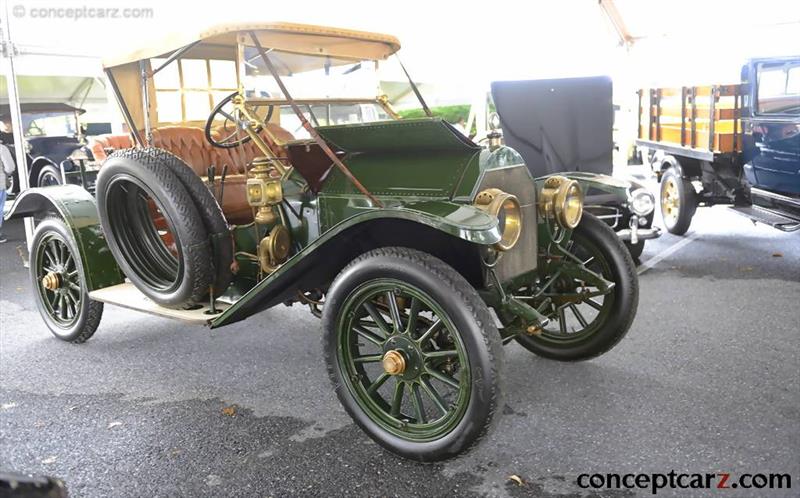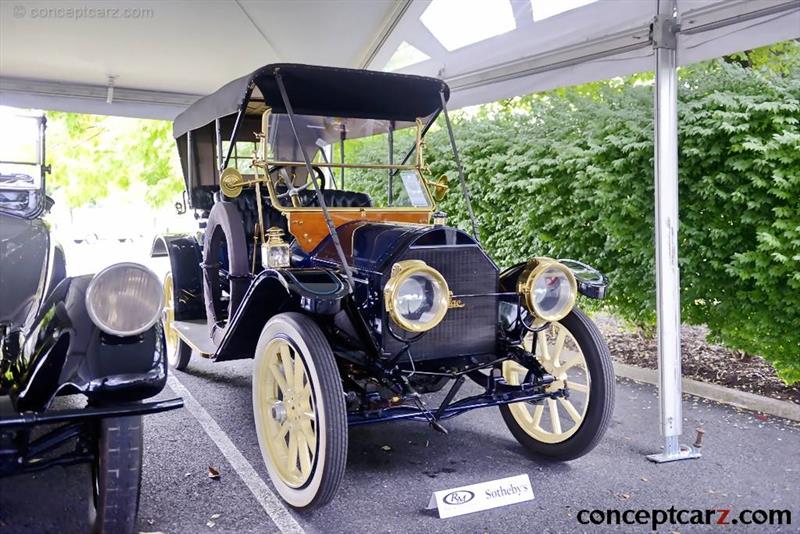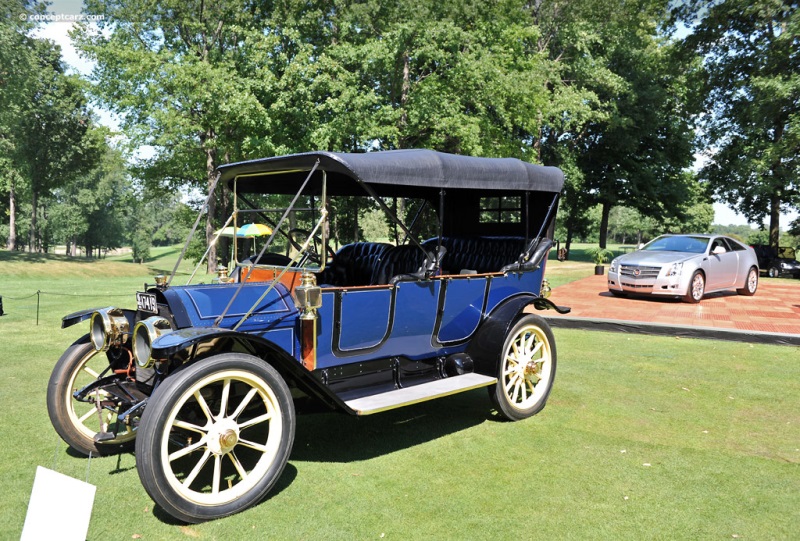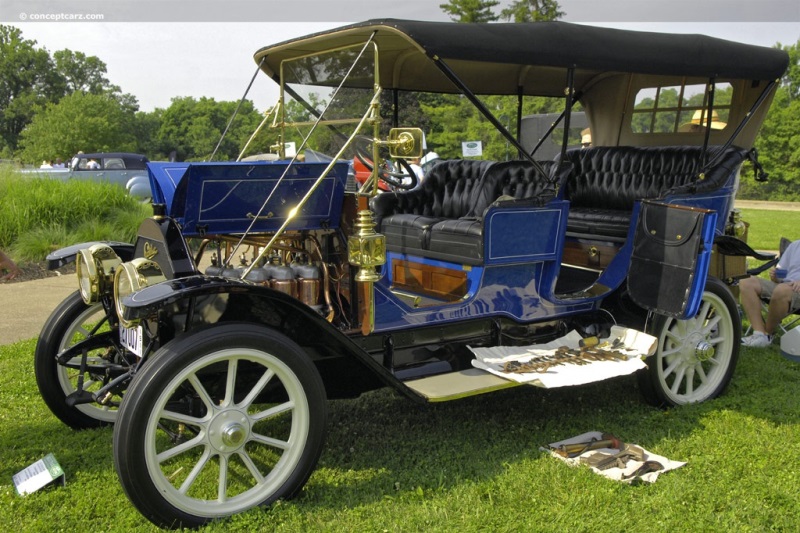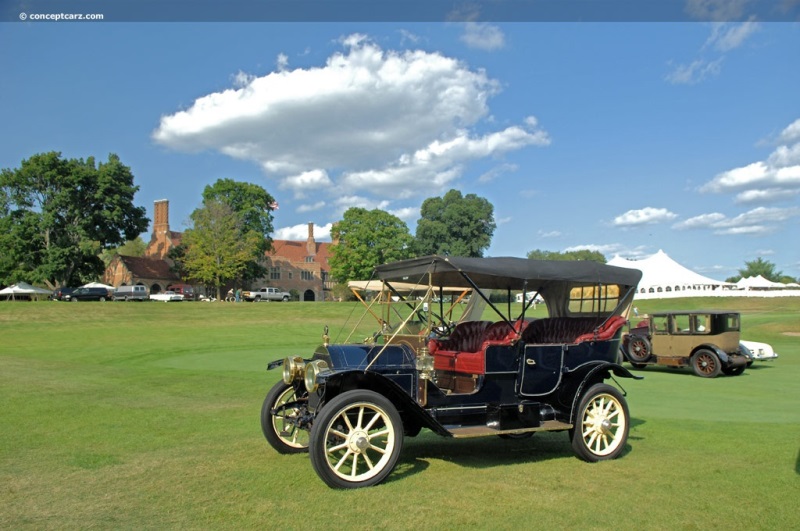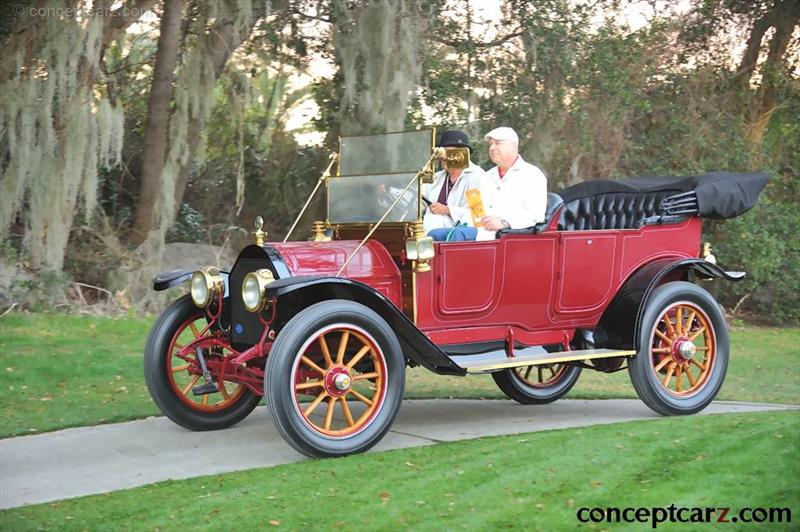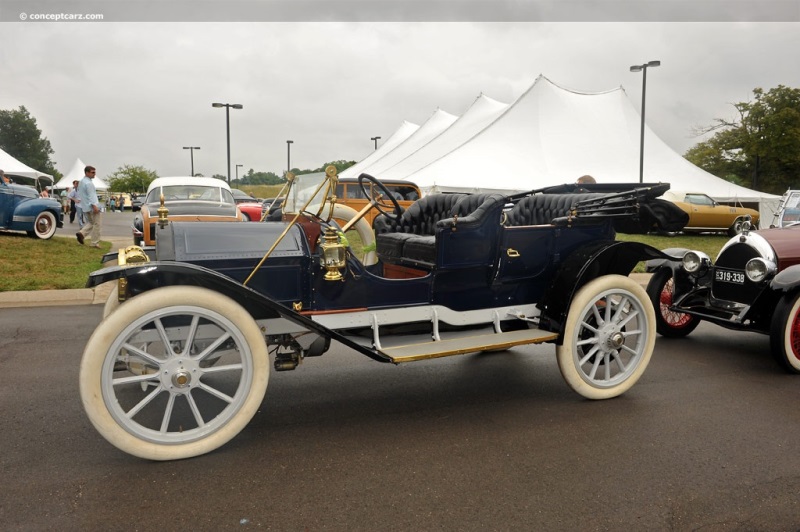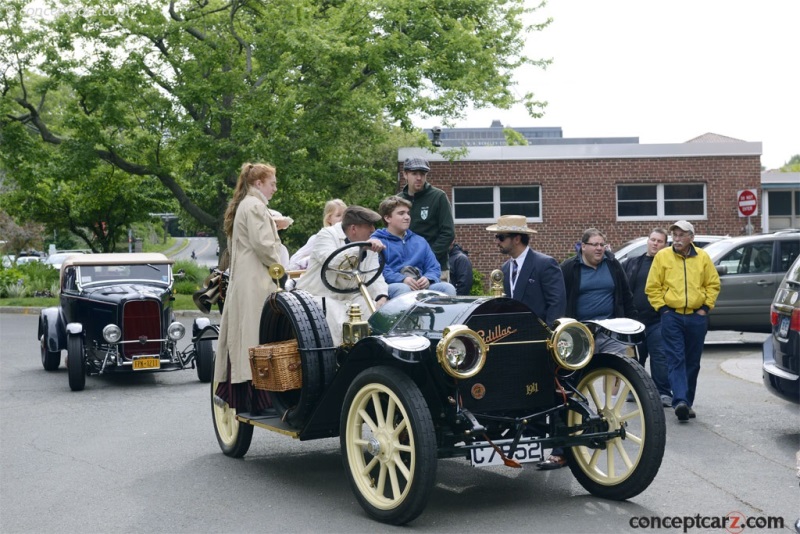The history of the Cadillac Company began with the Detroit Automobile Company, founded on August 5th of 1899 in Detroit, Michigan. Twelve financial backers provided automotive mechanic Henry Ford with the capital needed for this venture. Ford was reluctant to put a car into production until it had been perfected, much to the chagrin of his investors who quickly lost confidence in his ability to bring a horseless carriage to market. After around twenty-two examples had been completed, Henry Ford left, and Henry M. Leland of Leland & Faulconer Manufacturing Company was hired to value the company's assets. Instead, Leland persuaded the remaining partners to continue the automobile business with Leland's 1-cylinder engine. The company was renamed the Cadillac Automobile Company on August 22nd of 1902, and quickly established a reputation for its precision manufacturing and reliability, reinforced by winning the British Dewar Trophy for the most important advancement of the year in the automobile industry.
1909 was a significant year for the company, both for its acquisition by General Motors and the introduction of the Model 30 (in December of 1909). From the time of its introduction through 1914, it was the only Cadillac model offered. It was based on the earlier 1907 Model G and in 1910 it became the first Cadillac offered with a closed body - the coachwork was by Fisher.
The vertical, inline, L-head four-cylinder engine had individual cast-iron cylinders, a copper water jacket, mechanical-pushrod-roller cam followers, a float feed carburetor built by Cadillac, a 255.4 cubic-inch displacement, five main bearings, and delivered thirty horsepower. The chassis originally had a wheelbase size of 106 inches, growing to 110 inches in 1910, and 116 inches in 1911. Body styles were originally a two-door touring, roadster, and four-passenger Demi-Tonneau with a factory price of $1,400. A year later, prices increased by $200, and a 2-passenger roadster and a two-door limousine and coupe joined the lineup. Gas headlamps became standard, and the engine bore grew to 4.25 inches (an increase of 1/4 inch). The prior displacement size of 226.2 CID grew to 255.4 CID.
Prices on the 1911 Cadillac increase by approximately $100, with the roadsters (2 and 3 passenger versions), the two-door touring, and the two-door Demi-Tonneau selling for $1,700. The Fore-Door Touring was priced at $1,800, the Torpedo at $1,850, the 2-door Limousine at $3,000, and the coupe at $2,250. The engine bore grew by another .25-inch, to 4.5-inches, and displacement was now 286.3 CID. The carburetor was exchanged for a Schebler Model L unit, and Bosch high tension magneto and Delco single coil system were used for dual ignition. The engine was backed by a three-speed selective, sliding gear transmission with a leather-faced cone clutch. Stopping power was by mechanical brakes on two wheels, and wood artillery wheels were at all four corners. The rear axle now used a Timken full floating setup, with a torsion arm and two universal joints in the driveshaft.
Optional items included mohair tops, Prest-O-Lite style B tank, seat covers, Jones electric horn, and a windshield.
Cadillac sold 10,019 vehicles in 1911, an increase over the 8,008 vehicles produced a year earlier. 5,903 Cadillacs had been sold in 1909. Sales would continue to increase during the 1910s, with 13,995 vehicles sold in 1912, followed by 15,018 a year later.
Production of the four-cylinder Model 30 would continue through 1914 when it was replaced in 1915 by the Type 51 eight-cylinder Cadillac - the first production V-8.
by Daniel Vaughan | Dec 2020
1909 was a significant year for the company, both for its acquisition by General Motors and the introduction of the Model 30 (in December of 1909). From the time of its introduction through 1914, it was the only Cadillac model offered. It was based on the earlier 1907 Model G and in 1910 it became the first Cadillac offered with a closed body - the coachwork was by Fisher.
The vertical, inline, L-head four-cylinder engine had individual cast-iron cylinders, a copper water jacket, mechanical-pushrod-roller cam followers, a float feed carburetor built by Cadillac, a 255.4 cubic-inch displacement, five main bearings, and delivered thirty horsepower. The chassis originally had a wheelbase size of 106 inches, growing to 110 inches in 1910, and 116 inches in 1911. Body styles were originally a two-door touring, roadster, and four-passenger Demi-Tonneau with a factory price of $1,400. A year later, prices increased by $200, and a 2-passenger roadster and a two-door limousine and coupe joined the lineup. Gas headlamps became standard, and the engine bore grew to 4.25 inches (an increase of 1/4 inch). The prior displacement size of 226.2 CID grew to 255.4 CID.
Prices on the 1911 Cadillac increase by approximately $100, with the roadsters (2 and 3 passenger versions), the two-door touring, and the two-door Demi-Tonneau selling for $1,700. The Fore-Door Touring was priced at $1,800, the Torpedo at $1,850, the 2-door Limousine at $3,000, and the coupe at $2,250. The engine bore grew by another .25-inch, to 4.5-inches, and displacement was now 286.3 CID. The carburetor was exchanged for a Schebler Model L unit, and Bosch high tension magneto and Delco single coil system were used for dual ignition. The engine was backed by a three-speed selective, sliding gear transmission with a leather-faced cone clutch. Stopping power was by mechanical brakes on two wheels, and wood artillery wheels were at all four corners. The rear axle now used a Timken full floating setup, with a torsion arm and two universal joints in the driveshaft.
Optional items included mohair tops, Prest-O-Lite style B tank, seat covers, Jones electric horn, and a windshield.
Cadillac sold 10,019 vehicles in 1911, an increase over the 8,008 vehicles produced a year earlier. 5,903 Cadillacs had been sold in 1909. Sales would continue to increase during the 1910s, with 13,995 vehicles sold in 1912, followed by 15,018 a year later.
Production of the four-cylinder Model 30 would continue through 1914 when it was replaced in 1915 by the Type 51 eight-cylinder Cadillac - the first production V-8.
by Daniel Vaughan | Dec 2020
Related Reading : Cadillac Model 30 History
The Cadillac Model 30 was introduced in 1908 and remained in production until September of 1914. When first introduced, the Model Thirty sold for %241400 and available as a three-passenger Roadster, 2-door Demi-Tonneau with seating for four, or a two-door, five passenger Tourer. The wheelbase was 106-inches and powered by a 226.2 cubic-inch engine with five main bearings. There were three forward....
Continue Reading >>
Continue Reading >>
Related Reading : Cadillac Model 30 History
Cadillacs first vehicles were single-cylinder vehicles that offered reasonable power and durability. The single-cylinder engine would stay in production for six years. The third year of Cadillac production, a four-cylinder engine was introduced offering slightly more horsepower allowing for larger and heavier bodies to be fitted on the chassis. In 1905 the Model D featured seating for five and....
Continue Reading >>
Continue Reading >>
Cadillac
Similarly Priced Vehicles
- Pope-Hartford Model W ($2,750-$4,150)
- Baker Electric ($1,000-$3,500)
- Marmon Model 32 ($2,750-$4,100)
- Stoddard-Dayton Model 11-H ($1,550-$2,700)
- Auburn Model N ($1,750-$1,750)
- Selden Model 40R ($2,500-$2,500)
- Kissel Kar D-11 ($2,000-$3,200)
- Mercer Model 35 ($2,250-$2,750)
Average Auction Sale: $57,551
Cadillac Monthly Sales Volume
March 2023
36,321
1911 Cadillac Model 30 Vehicle Profiles
Recent Vehicle Additions
Performance and Specification Comparison
Price Comparison
Model 30 Specification Comparison by Year
Year
Production
Wheelbase
Engine
Prices
Related Automotive News

Seven storied Rolls-Royces celebrate 120 years at Salon Privé Concours
Rare, dramatic and beautiful, some of the worlds most important Rolls-Royces to gather at Blenheim Palace next month, including…
1911 RAC trials car responsible for Best Car in the World slogan
Hooper-bodied Silver Wraith Geneva Show car from...

Maserati Debuts Nerissimo Package For Levante, Ghibli And Quattroporte At Los Angeles Auto Show
New Nerissimo black package now available for Levante, Ghibli and Quattroporte models
2018 Ghibli and Levante now available in new GranLusso and GranSport trims
GranTurismo and GranTurismo Convertible MY18 receive exterior restyling and interior...

Born Confident? Order Your T-Roc Today!
T-Roc compact SUV enters new market segment for Volkswagen
Five-door T-Roc offers, space, style, safety and practicality
Selected versions open for order from 3 October, with prices starting at £20,425 RRP OTR
Milton Keynes – Volkswagen i...

Refined Maseratis Add Italian Flair to The Pebble Beach Auctions Presented by Gooding & Company
Selections include - five Maseratis from a single renowned collection, a 1957 Maserati A6G54 Spyder, a 1971 Maserati Ghibli 4.9 SS Spider, a 1963 Maserati Sebring Series I and a 1960 Maserati 3500 GT
SANTA MONICA, Calif. (July 8, 2016) –...
MERCEDES-BENZ 2014 G63 AMG: THE ULTIMATE G-CLASS
The latest technology for the AMG off-road icon the new 2014 G63 AMG impresses with a state-of-the-art powertrain, expressive new design and improved efficiency. All this is largely attributable to the AMG 5.5-liter V8 biturbo engine delivering 536...
























